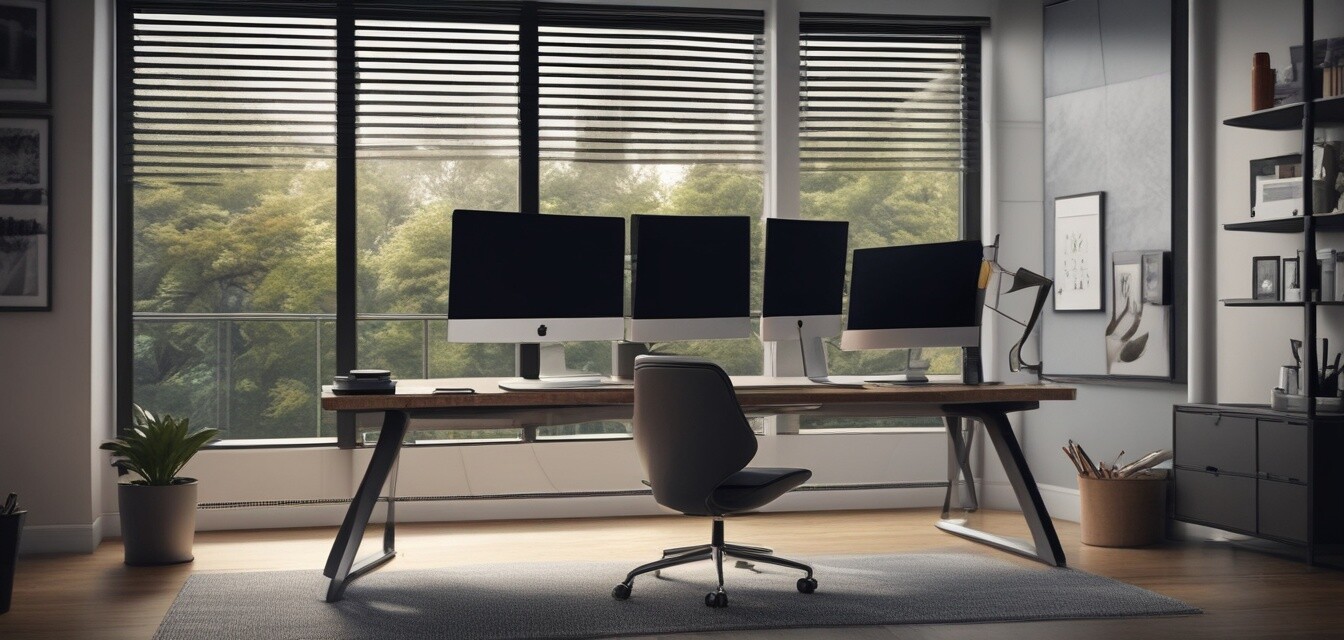
How to Create a Dual-Screen Setup for Your Home Office
Key Takeaways
- A dual-screen setup greatly enhances productivity.
- Proper positioning and alignment are crucial for comfort.
- Utilizing a docking station can streamline connections.
- Many accessories are available to optimize your dual-monitor experience.
- Regularly updated technology can improve your work efficiency.
Setting up a dual-screen configuration for your home office can significantly improve your productivity and efficiency. Whether it's for multitasking, gaming, or just having more screen real estate, dual monitors offer a range of benefits. In this comprehensive guide, we will walk you through the steps, considerations, and best practices for establishing an effective dual-screen setup.
Benefits of a Dual-Screen Setup
Before delving into the setup process, let’s review why having two screens can be a game-changer:
- Increased Productivity: Juggling multiple applications becomes more manageable.
- Improved Workflow: Reduce the time spent switching between tabs or windows.
- Enhanced Multitasking: Easily compare documents or data side-by-side.
- Better Visualization: Ideal for tasks involving extensive data analysis.
Essential Components for Your Dual-Screen Setup
Before you start setting up your dual screens, you’ll need to ensure you have the right components:
| Component | Description |
|---|---|
| Monitors | Two compatible monitors with similar sizes and resolutions are recommended. |
| Docking Station | A docking station can simplify connections and increase connectivity options. |
| Monitor Stands | Use stands or mounts to optimize monitor height and position. |
| Cables | Ensure you have the appropriate cables for connecting your monitors (HDMI, DisplayPort, etc.). |
| Computer | Your computer's hardware should support dual displays. |
Step-by-Step Guide to Setting Up Dual Monitors
Step 1: Prepare Your Space
Designate a comfortable and spacious area in your home office for the monitors. Make sure there’s sufficient desk space and that the area has access to power outlets for your devices.
Step 2: Position Your Monitors
Proper positioning is vital for avoiding strain. Here’s how to set them up:
- Align the monitors at eye level.
- Position them approximately an arm's length away from you.
- Angle them slightly inward to create a more immersive experience.
Step 3: Connect Your Monitors
Using your selected cables, connect both monitors to your computer. If you're using a docking station, connect the monitors to the docking station. Make sure everything is secure before proceeding to the next step.
Step 4: Configure Display Settings
Once everything is connected, you will need to configure the display settings:
- Access the display settings on your computer.
- Select "Extend these displays" to use both monitors.
- Adjust the resolution settings, if necessary, to match both displays.
Step 5: Organize Your Workflow
After setting up your monitors, organize your workflow by dedicating specific applications or tasks to each screen for enhanced productivity. For example:
- One screen for communication (emails and chat).
- Another screen for active projects (document editing, spreadsheets).
Accessories that Enhance the Dual-Screen Experience
To maximize the efficiency of your dual-screen setup, consider these useful accessories:
| Accessory | Benefits |
|---|---|
| Monitor Arm | Offers height adjustment and frees up desk space. |
| Docking Station | Simplifies cable management and enhances connectivity. |
| USB Hubs | Provides additional USB ports for peripherals. |
| Blue Light Filter | Helps reduce eye strain from extended screen time. |
| Ergonomic Accessories | Keyboards and mice designed to minimize strain and improve comfort. |
Final Thoughts
A dual-screen setup can transform your home office into a highly productive workspace. By following the steps outlined in this guide, you’ll be able to create a comfortable and efficient environment tailored to your needs. Don't forget to regularly assess your setup and remain updated on the latest technologies and accessories that can improve your experience. Check out our resource pages for related products such as Docking Stations, Multi-Monitor Stands, and Keyboards and Mice to complete your ideal home office configuration.
Pros
- Enhanced productivity and efficiency.
- Improved multitasking capabilities.
- Greater workspace organization.
Cons
- Can be costly if purchasing new monitors.
- Takes up more desk space.
- Requires additional setup time and configuration.